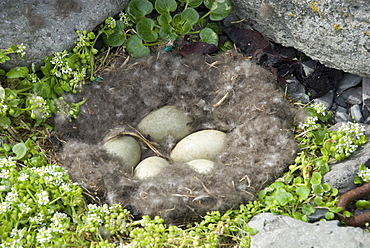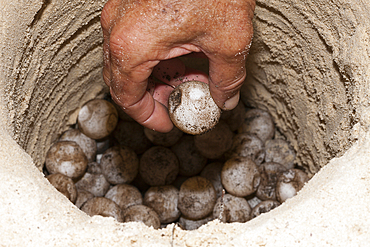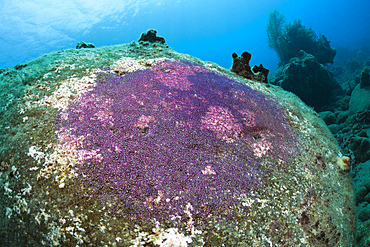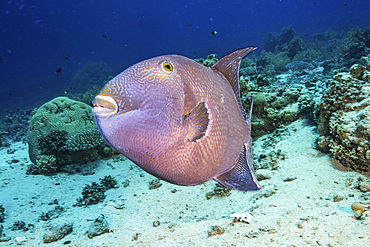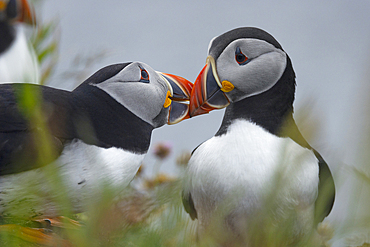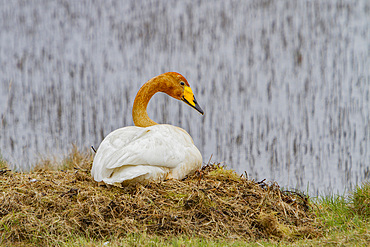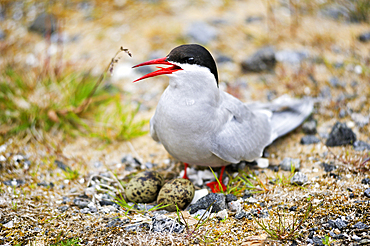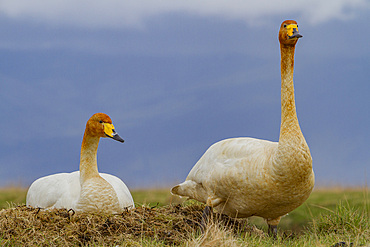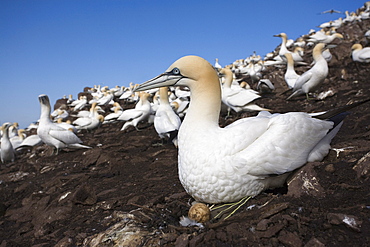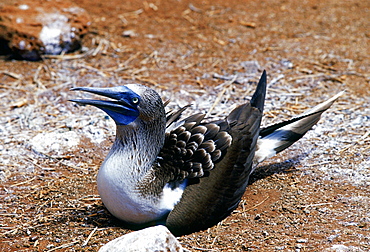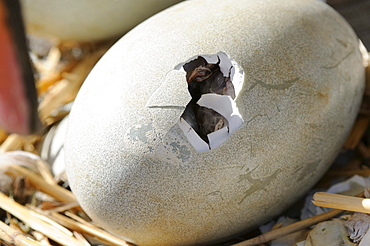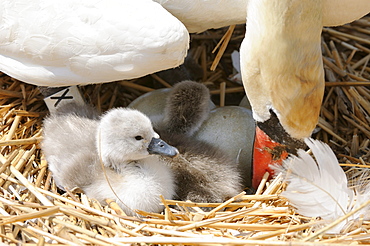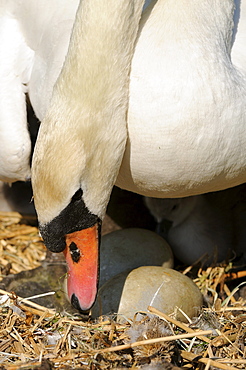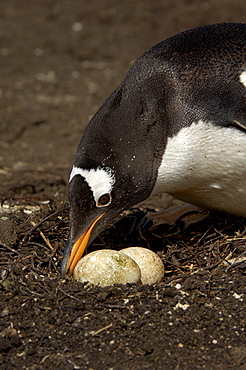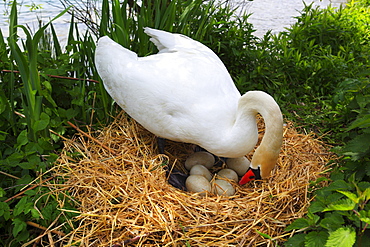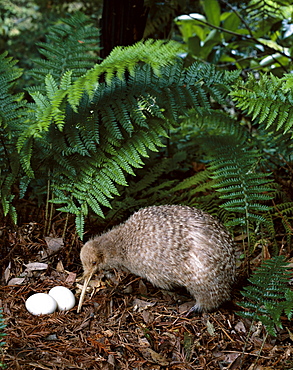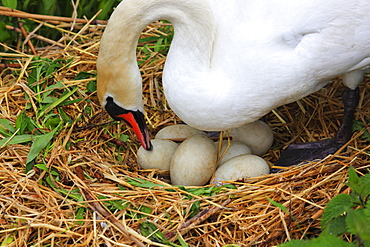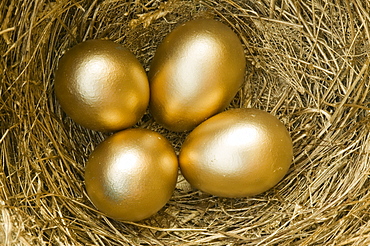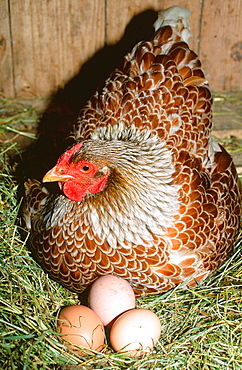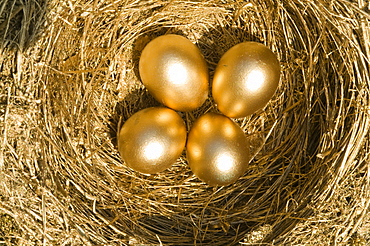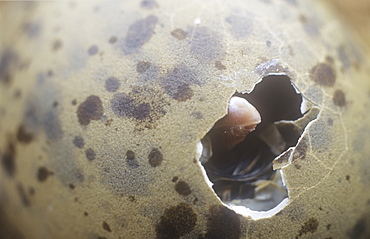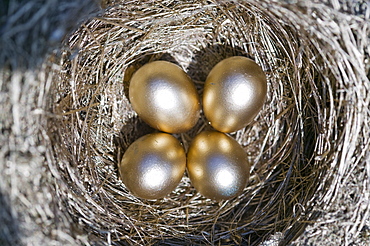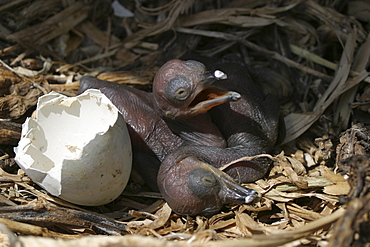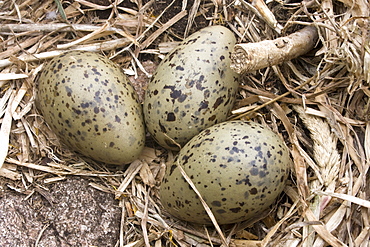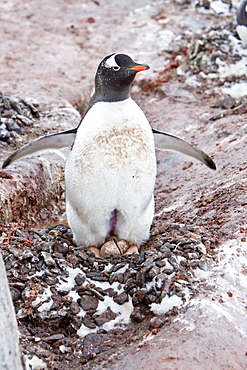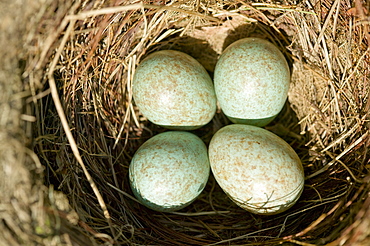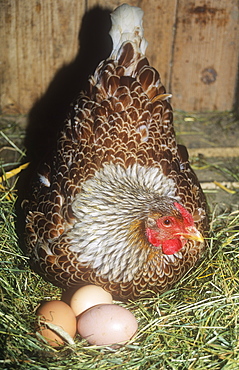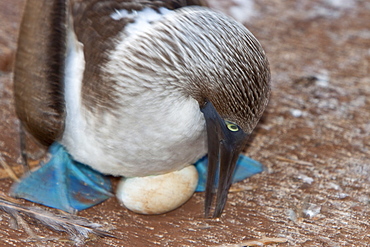Results
35 results found
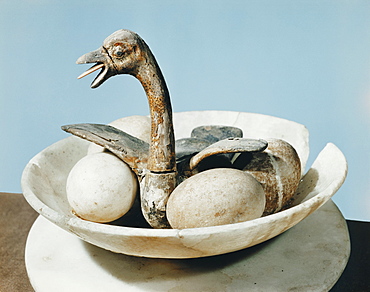
Lid of an alabaster jar decorated with a bird in a nest and eggs in a bowl, from the tomb of the pharaoh Tutankhamun, discovered in the Valley of the Kings, Thebes, Egypt, North Africa, Africa
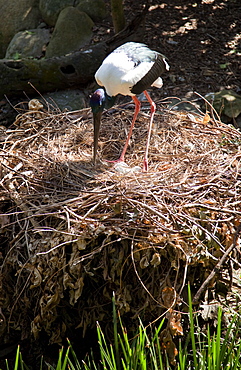
Black-necked stork (Ephippiorhynchus asiaticus) on nest with eggs, The Wildlife Habitat, Port Douglas, Queensland, Australia, Pacific
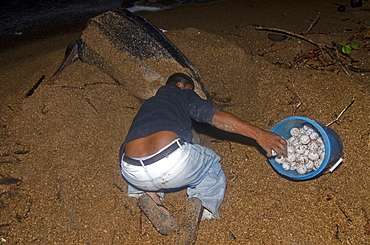
Leatherback turtle (Dermochelys coriacea) eggs being collected for transfer to a safer hatchery location, Shell Beach, Guyana, South America
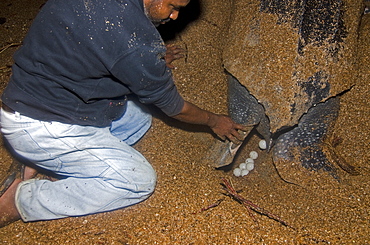
Leatherback turtle (Dermochelys coriacea) laying eggs under the watchful eyes of a conservation worker, Shell Beach, Guyana, South America
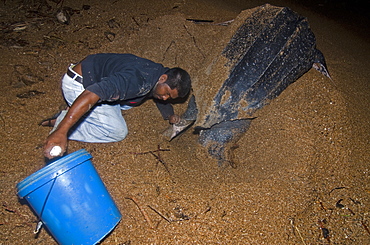
Leatherback turtle (Dermochelys coriacea) eggs being collected for transfer to a safer hatchery location, Shell Beach, Guyana, South America
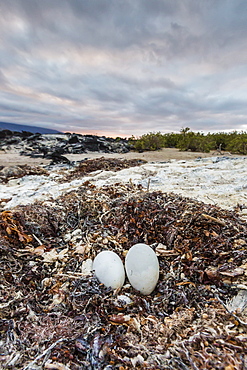
Flightless cormorant nest (Phalacrocorax harrisi), Fernandina Island, Galapagos Islands, UNESCO World Heritage Site, Ecuador, South America
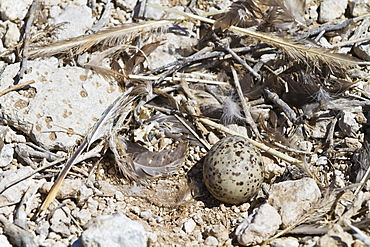
Heermann's gull (Larus heermanni) nest with egg, Isla Rasa, Gulf of California (Sea of Cortez), Mexico, North America
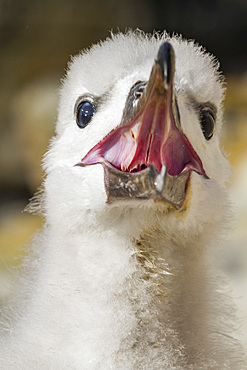
Black-browed albatross (Thalassarche melanophrys) chick, close-up, on the nest at nesting site on New Island, Falklands, South America
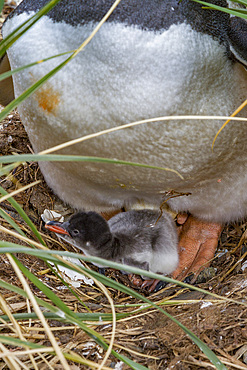
Adult gentoo penguin (Pygoscelis papua) with minutes-old newly hatched chick at Gold Harbor on South Georgia
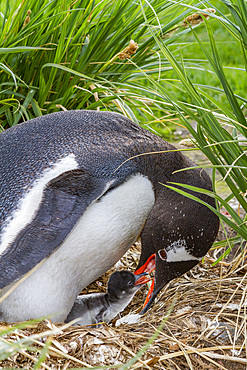
Adult gentoo penguin (Pygoscelis papua) feeding minutes-old newly hatched chick at Gold Harbor on South Georgia
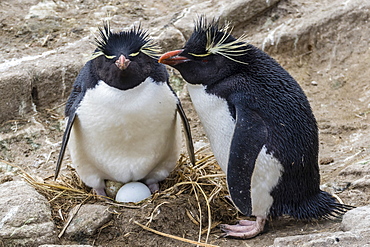
Adult rockhopper penguins (Eudyptes chrysocome) at nesting site on New Island, Falkland Islands, U.K. Overseas Protectorate, South America
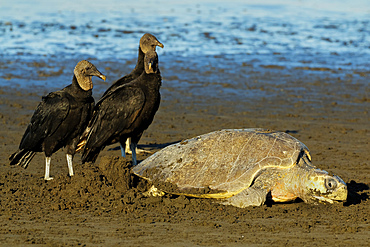
Vultures wait to steal eggs as Olive Ridley turtle digs nest at this refuge, Ostional, Nicoya Peninsula, Guanacaste, Costa Rica, Central America
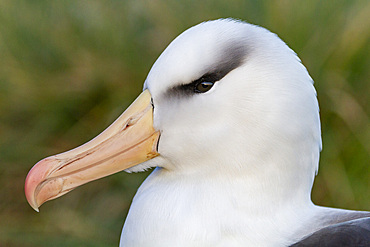
Adult black-browed albatross (Thalassarche melanophrys), close up at nesting site on West Point Island, Falklands, South America
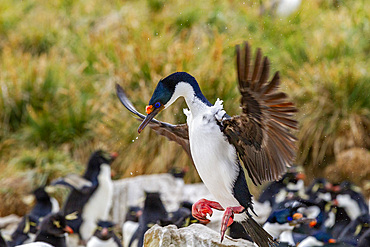
Imperial shag (Phalacrocorax atriceps), returning to the nest on New Island in the Falkland Islands, South America
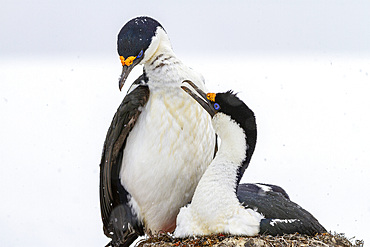
Antarctic shag (Phalacrocorax atriceps bransfieldensis), pair on nest at breeding site at Jougla Point, Antarctica, Polar Regions
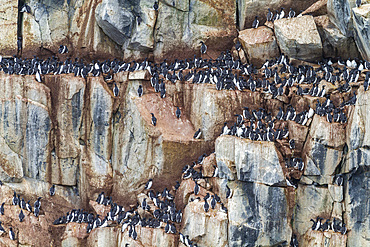
Brunnich's guillemot (Uria lomvia) breeding and nesting site at Cape Fanshawe in the Svalbard Archipelago, Norway, Arctic, Europe
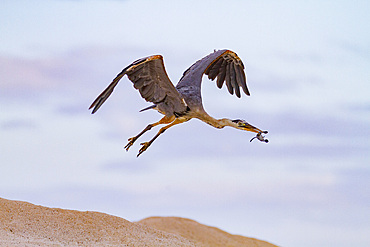
Adult great blue heron (Ardea herodias cognata) feeding on green sea turtle hatchlings, Galapagos Islands, UNESCO World Heritage Site, Ecuador, South America
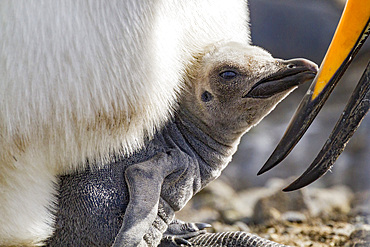
King penguin (Aptenodytes patagonicus) adult and chick at breeding and nesting colony at Salisbury Plain, South Georgia, Polar Regions
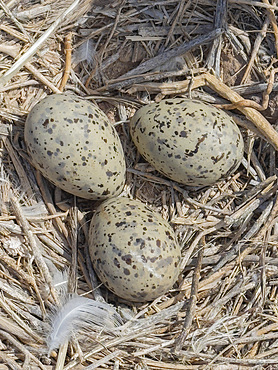
Yellow-footed gull (Larus livens), eggs in nest on Isla Coronado, Baja California Sur, Sea of Cortez, Mexico, North America
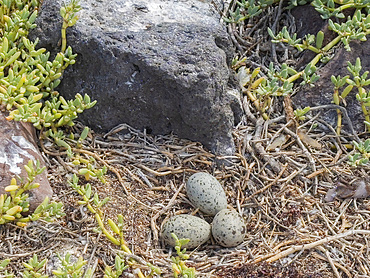
Yellow-footed gull (Larus livens), eggs in nest on Isla Coronado, Baja California Sur, Sea of Cortez, Mexico, North America
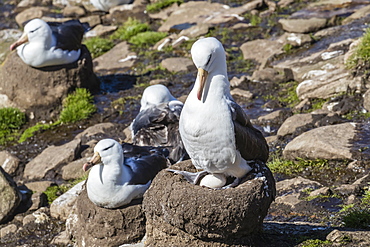
Black-browed albatross (Thalassarche melanophris) on egg in breeding colony on Saunders Island, Falkland Islands, South America

Loggerhead turtle (Caretta caretta), laying eggs at night, Banga Nek, Kwazulu Natal, South Africa, Africa
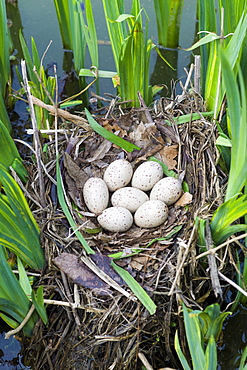
Moorhen's nest, with seven eggs laid, made with twigs among iris plants in a pond in Swinbrook, the Cotswolds, Oxfordshire, UK
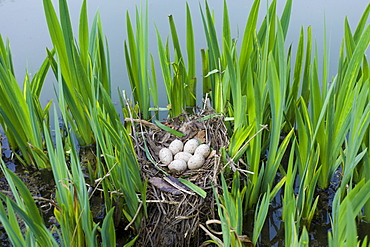
Moorhen's nest, with seven eggs laid, made with twigs among iris plants in a pond in Swinbrook, the Cotswolds, Oxfordshire, UK
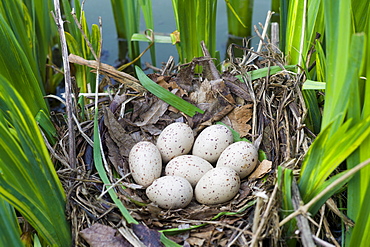
Moorhen's nest, with seven eggs laid, made with twigs among iris plants in a pond in Swinbrook, the Cotswolds, Oxfordshire, UK
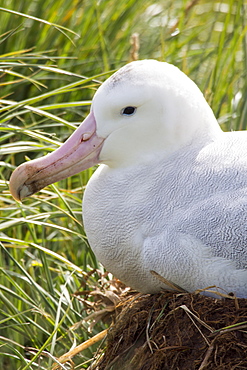
A Wandering Albatross; Diomedea exulans, the bird with the largest wing span on the planet, at around 11 feet 6 inches, nesting on Prion Island, South Georgia, Southern Ocean.
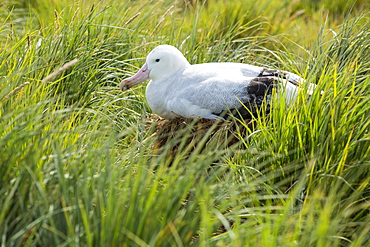
A Wandering Albatross; Diomedea exulans, the bird with the largest wing span on the planet, at around 11 feet 6 inches, nesting on Prion Island, South Georgia, Southern Ocean.
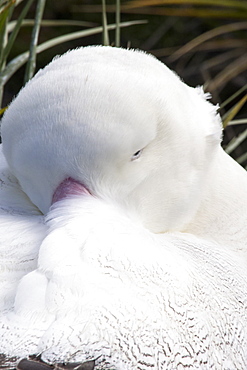
A Wandering Albatross; Diomedea exulans, the bird with the largest wing span on the planet, at around 11 feet 6 inches, nesting on Prion Island, South Georgia, Southern Ocean.
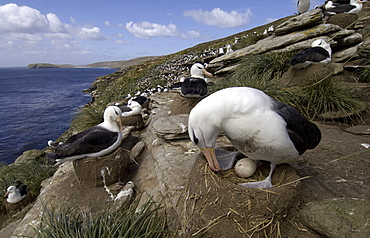
Black-browed albatross (diomedea melanophoris) falkland islands, sat on nest, showing egg and colony behind
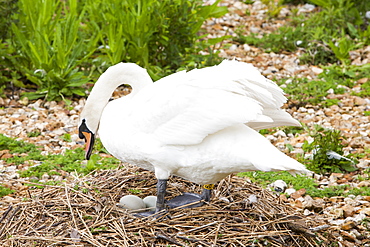
Mute swan (Cygnus olor) on its nest at the Abbotsbury Swannery, Dorset, England, United Kingdom, Europe
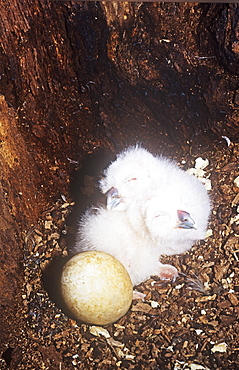
Young Tawny Owl chicks in the nest in a hollow tree in Ambleside, Cumbria, England, United Kingdom, Europe
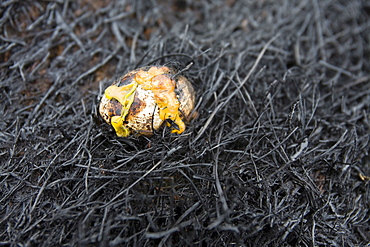
A moorland bird's egg fried by the moorland fire when tinder dry conditions were set alight by a discarded cigarette on the 25th of May, Littleborough, Lancashire, England, United Kingdom, Europe
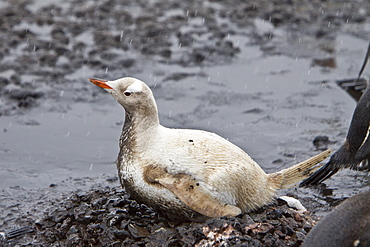
An adult Leucistic Gentoo penguin (Pygoscelis papua) nesting and incubating two eggs at Gabriel Gonzales Videla Research Station, Antarctica
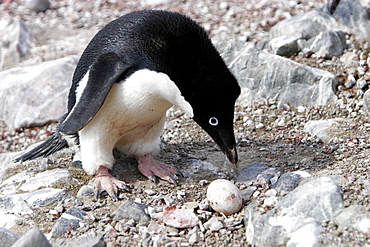
Adult Adelie penguin (Pygoscelis adeliae) inspecting a non-viable egg at Devil Island, Antarctic Peninsula. Adelie penguins are truly an ice dependant penguin species.
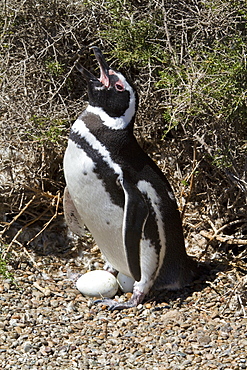
Magellanic penguins (Spheniscus magellanicus) at a breeding and molting site in Estancia San Lorenzo on Peninsula Valdez, Patagonia, Argentina, South Atlantic
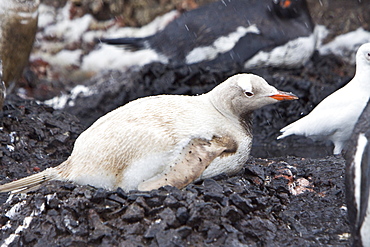
An adult Leucistic Gentoo penguin (Pygoscelis papua) nesting and incubating two eggs at Gabriel Gonzales Videla Research Station, Antarctica
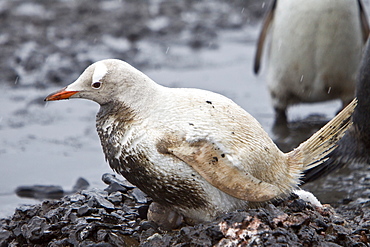
An adult Leucistic Gentoo penguin (Pygoscelis papua) nesting and incubating two eggs at Gabriel Gonzales Videla Research Station, Antarctica
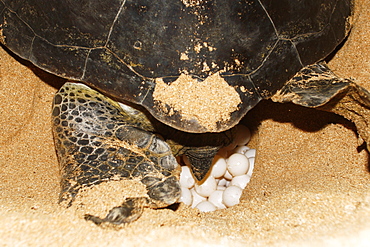
Adult female green sea turtle (Chelonia mydas) hauled out and laying eggs on Ascension Island, south Atlantic Ocean
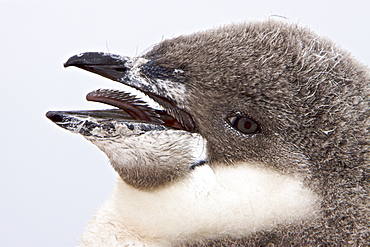
Chinstrap penguin (Pygoscelis antarctica) chick head detail at colony on Useful Island near the Antarctic Peninsula. There are an estimated 2 million breeding pairs of chinstrap penguins in the Antarctic peninsula region alone, perhaps as many as 7.5 million breeding pairs in all of Antarctica. Their name derives from the narrow black band under their heads which makes it appear as if they are wearing black helmets, making them one of the most easily identified types of penguin. Other names for them are "Ringed Penguins", "Bearded Penguins", and "Stonecracker Penguins" due to their harsh call. They grow to 68 cm (27 in). The average adult weight of a Chinstrap Penguin is 4.5 kg (10 lbs). Weight can range from 3 to 6 kg (6.6-13.2 lbs), with males being slightly larger and weight varying based on where the penguin is in the breeding cycle. Their diet consists of krill, shrimp, and fish. On land they build circular nests from stones, and lay two eggs, which are incubated by both the male and the female for shifts of five to ten days. They can also breed on icebergs, though they prefer non-icy conditions. The chicks hatch after about 35 days, and have fluffy gray backs and white fronts. The chicks stay in the nest for 20?30 days before they go to join a creche. At around 50?60 days old, they moult, gaining their adult plumage and go to sea. The Chinstrap Penguin was first described by German naturalist Forster in 1781. Its specific epithet was often seen as antarctica, however a 2002 review determined the genus Pygoscelis was masculine, and hence the correct binomial name is Pygoscelis antarcticus.

Wild Slaty-backed Gull (Larus schistisagus) , nesting, Tyuleniy Island, Russia, Asia MORE INFO: Gulls circle the Kittywakes colony in hope that if they fly, the gulls can swoop in and grab their exposed eggs
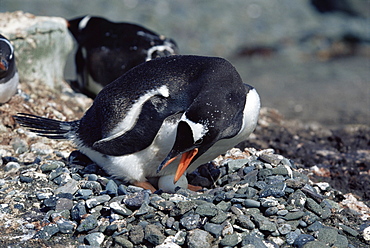
Gentoo penguin (Pygoscelis papua) nesting near whalebone, Aitcho Island, Antarctica, Southern Ocean.
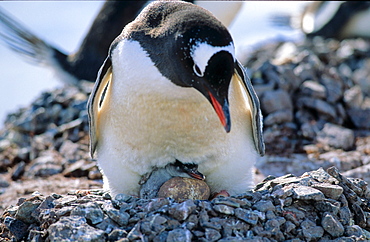
Adult Gentoo Penguin (Pygoscelis papua) sitting on nest with one hatched chicken and one still being in egg. Cuverville Island, Antarctica

Hawksbill turtle (Eretmochelys imbricata) - adult female returning to sea after laying eggs in the sand. Bird Island, Seychelles, Indian Ocean (RR)
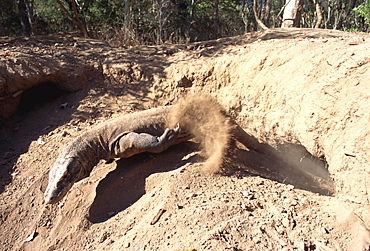
Komodo dragon female on megapode mound (Varanus komodoensis) female uses these birds mounds for nesting site for her own eggs, Komodo Island, Indonesia
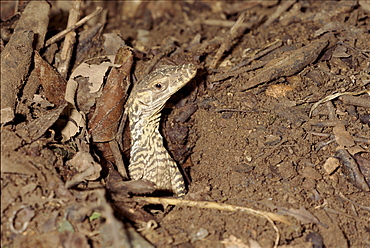
Komodo dragon hatchling emerging, Komodo Island, Indonesia. Eggs are laid underground, in this case under a megapode mound, and so hatchlings have to dig themselves out.
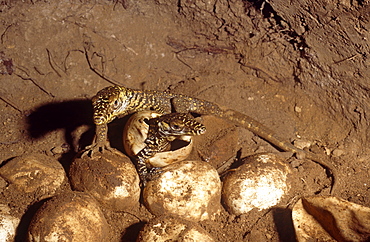
Young hatchling Komodo dragon (Varanus komodoensis). one of thirty three eggs only twenty eight hatched.
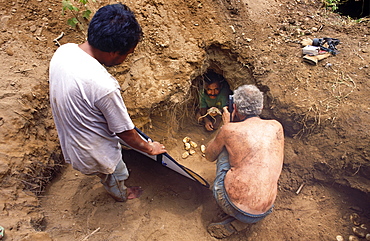
One of many entrances to megapode mound containing Komodo dragon egg chamber. Film crew found the nest the very day the eggs hatched after 9 month gestation. Young hatchling Komodo dragons (Varanus komodoensis) and their egg cases.
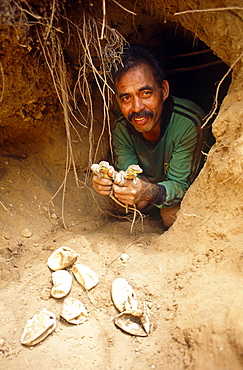
One of many entrances to megapode mound containing Komodo dragon egg chamber. Film crew found the nest the very day the eggs hatched after 9 month gestation. Young hatchling Komodo dragons (Varanus komodoensis) and their egg cases.
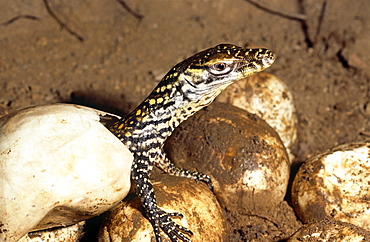
Young hatchling Komodo dragon (Varanus komodoensis). one of thirty three eggs only twenty eight hatched.
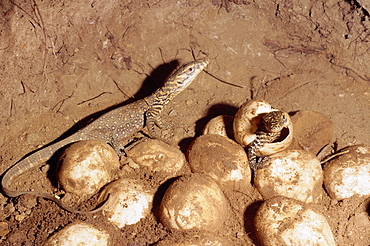
Komodo dragon hatching from egg (Varanus komodoensis) Komodo Is Indonesia. Eggs are laid underground, here under megapode mound.
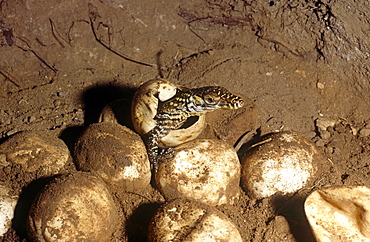
Young hatchling Komodo dragon (Varanus komodoensis). one of thirty three eggs only twenty eight hatched.
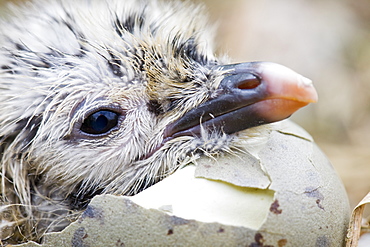
Lesser black backed gulls nesting on Walney Island near Barrow in Funress, Cumbria, England, United Kingdom, Europe
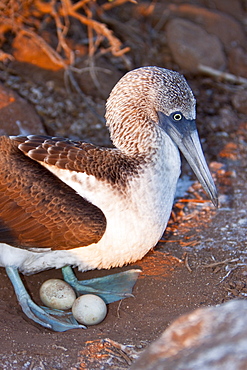
Blue-footed booby (Sula nebouxii) adult on eggs in the Galapagos Island Group, Ecuador. MORE INFO: The Galapagos are a nesting and breeding area for blue-footed boobies.

Hawksbill turtle (Eretmochelys imbricata) - adult female returning to sea after laying eggs in the sand. Bird Island, Seychelles, Indian Ocean. (RR)
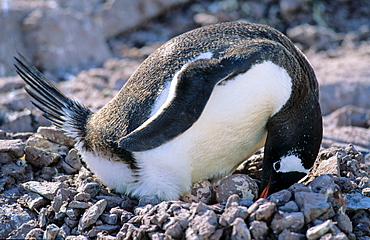
Adult Gentoo Penguin (Pygoscelis papua) sitting on nest with two eggs. Cuverville Island, Antarctica
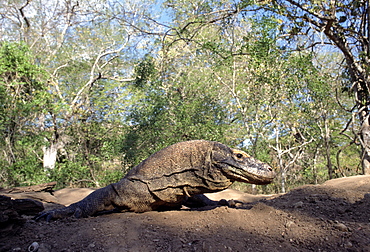
Komodo dragon female on megapode mound (Varanus komodoensis) female uses these birds mounds for nesting site for her own eggs, Komodo Island, Indonesia
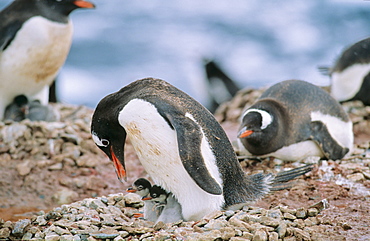
Gentoo Penguin (Pygoscelis papua) colony - some still lying on their eggs, others already have their chicks. Neko Harbour, Antarctica
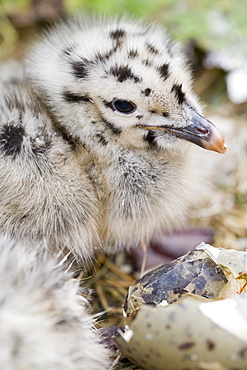
Lesser black backed gulls nesting on Walney Island near Barrow in Funress, Cumbria, England, United Kingdom, Europe
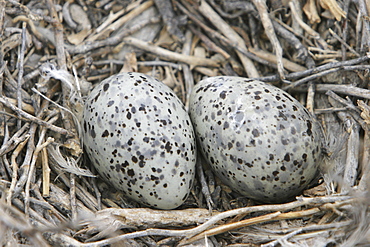
Heermann's Gull (Larus heermanni) eggs laid on their breeding grounds on Isla Rasa in the middle Gulf of California (Sea of Cortez), Mexico
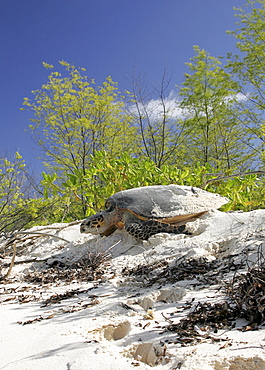
Hawksbill turtle (Eretmochelys imbricata) - adult female returning to sea after laying eggs in the sand. Bird Island, Seychelles, Indian Ocean. (RR)
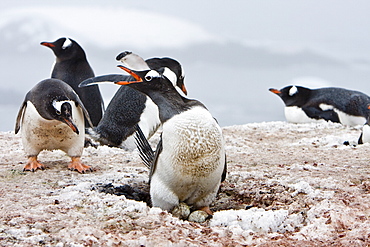
Adult gentoo penguin (Pygoscelis papua) on two eggs at breeding colony on Barrentos ISland in the Aitcho Island Group, South Shetland Islands, Antarctica
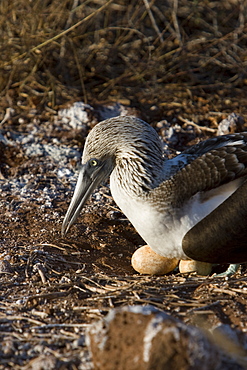
Blue-footed booby (Sula nebouxii) in the Galapagos Island Group, Ecuador. The Galapagos are a nest and breeding area for blue-footed boobies.
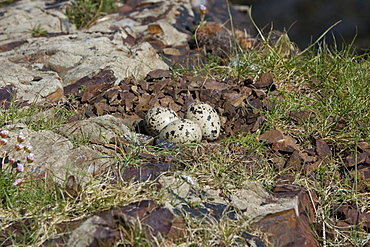
Nest of oystercatcher (Haematopus ostralegus). This nest was in exactly the same position for two consecutive breeding seasons. Hebrides, Scotland.

A lesser black backed gull's nest on Walney Island near Barrow in Funress, Cumbria, England, United Kingdom, Europe
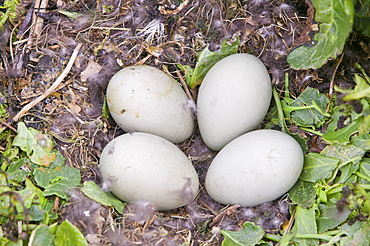
An eider duck's nest on Walney Island near Barrow in Funress, Cumbria, England, United Kingdom, Europe
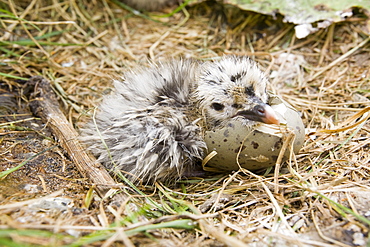
Lesser black backed gulls nesting on Walney Island near Barrow in Funress, Cumbria, England, United Kingdom, Europe
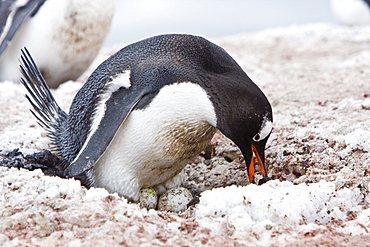
Adult gentoo penguin (Pygoscelis papua) on two eggs at breeding colony on Barrentos ISland in the Aitcho Island Group, South Shetland Islands, Antarctica
